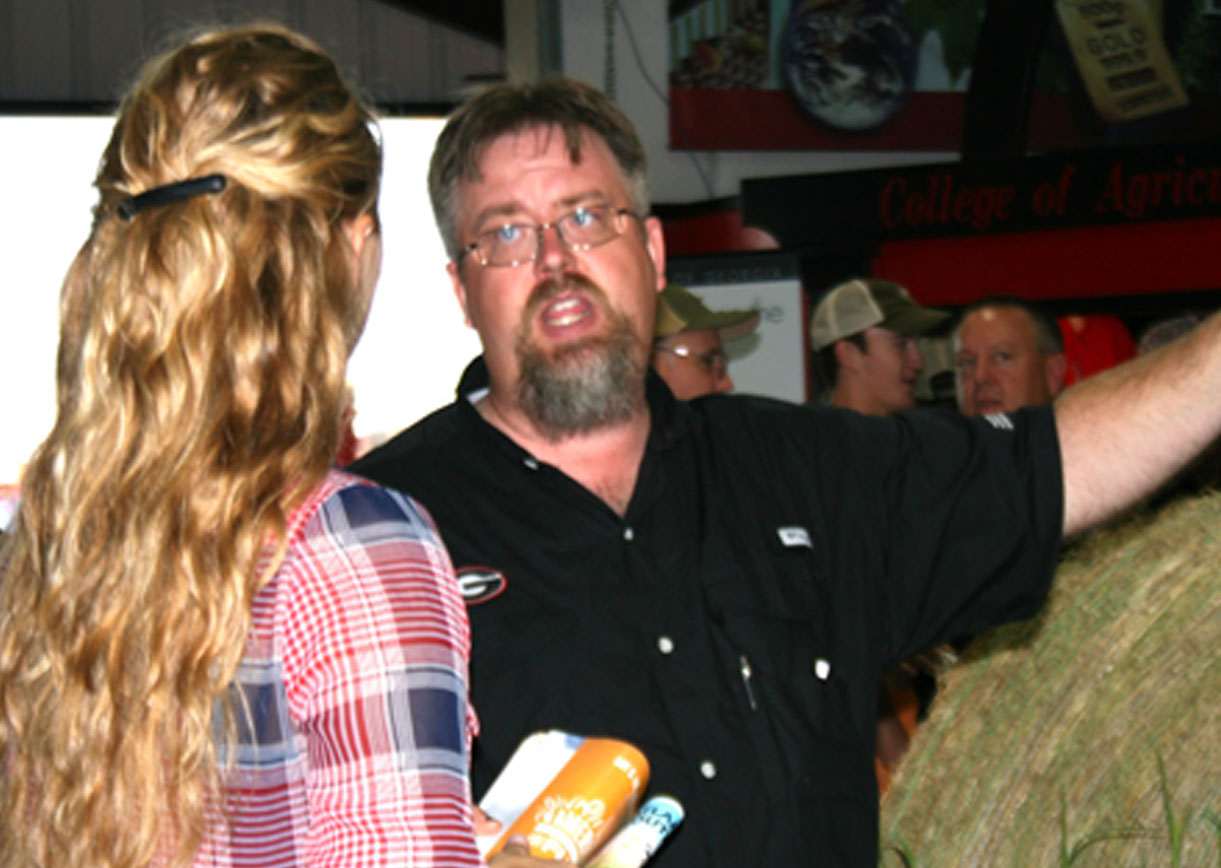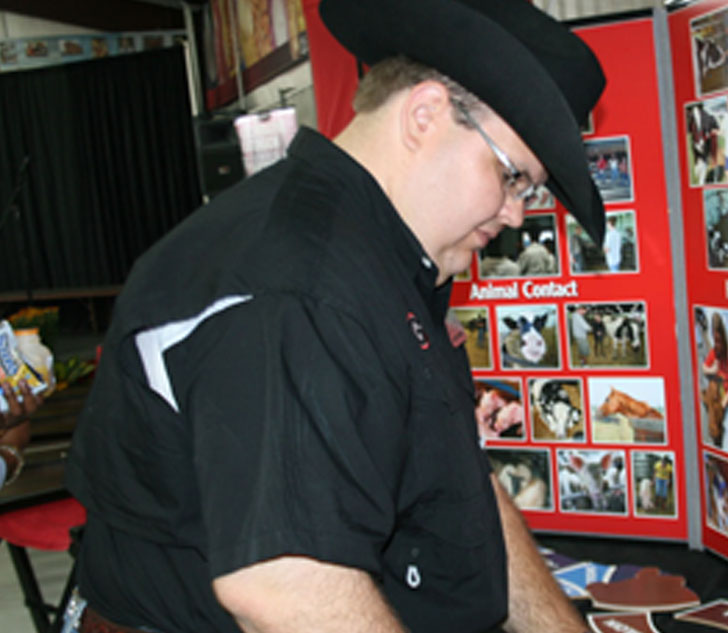Thousands of high school and college students visited the University of Georgia building at the Sunbelt Ag Expo in Moultrie, Ga. last week.
Brice Nelson and his group of student ambassadors from the College of Agricultural and Environmental Sciences were there to greet them.
Nelson, a student recruitment coordinator on the UGA campus in Athens, is hopeful something he or one of the college students said during the three-day event swayed the thought process of a prospective student.
“It’s more of a visibility, public relations type of thing and an awareness event for our potential students,” Nelson said. “I think we’ve been able to give out some information that they can use, either through the freshman process or transfer process, and hopefully it can make the application process to the University of Georgia a little bit easier.”
The recruiting tools at Nelson’s disposal were the CAES Student Ambassadors at the Expo. Potential students talked with the current UGA students to get first hand advice.
“Certainly having the CAES Ambassadors here is a highlight of our exhibit, with them interacting with potential students and potential students being able to ask our current students questions that are relevant to the campus, student life and academics,” Nelson said. “We hope they can get it from a first-person prospective. Our students enjoy coming here and providing information to the public.”
One of those students is Sarah Harrison, a CAES junior from Tifton. Though Thursday wasn’t her first visit to the Expo, it did mark her first time as a Student Ambassador from Athens.
“Some people around here, they might not know about the (college). We’re making sure everyone is just aware of what we have to offer them,” Harrison said.
To learn more about CAES undergraduate program, visit the website students.caes.uga.edu.
Cooperative ExtensionAcademics is just one aspect the college tried to showcase during the event, which attracts about 100,000 people annually. Another program on display was UGA Cooperative Extension. Thomas County Extension agent Andrew Sawyer attended the Expo and still finds there are those that aren’t fully informed about Extension’s existence. Weeks like this allow Sawyer and other agents to get the word out about the program.
“This is a super-educational opportunity for us, just to let folks know that we’re there. No matter where they’re at, in whatever county, they can call somebody,” Sawyer said.
For more information about UGA Extension, see extension.uga.edu.
Forages and ForagersUGA’s Expo theme this year was Forages and Foragers. The college used the three days to highlight its forage research programs, the beef cattle industry and dairy program. UGA beef cattle specialist Jacob Segers and his colleagues talked about how cattle digest forages and animal by-products like shampoos, conditioners and nail polish.
“Interactions with people at the Sunbelt are usually brief so you try to cram as much information as possible into as few minutes,” Segers said. “It’s a great way to connect with the public. A lot of it is very foreign to a lot of people that come through here. It’s good to get them exposed to it.”
To learn more about the UGA beef program, see ugabeef.caes.uga.edu.
Information on UGA’s forage program can be found at georgiaforages.com. Cotton pickingUGA faculty members were also in the Expo fields manning demonstration areas. Glen Harris, an Extension agronomist and expert in environmental soils and fertility, assisted with cotton-picking demonstrations and shared cotton research trial results.
“Cotton is a huge crop for us, of course. We actually get a lot of people that have never seen cotton harvested,” Harris said. “I’ve got a lot of research plots. The Expo staff is really good to me, helping me all year with my research plots. In return, I help direct the picking demonstrations where to go. It’s a lot of fun for me.”
The Expo included information for farmers of all ages.
“You get somebody that’s a little older, they like to talk about how they used to do it,” Harris said. “In fact, my research plots, I use a one-row Case machine that’s a 1952 model. You compare that to the six-row pickers, it’s a huge change.”








